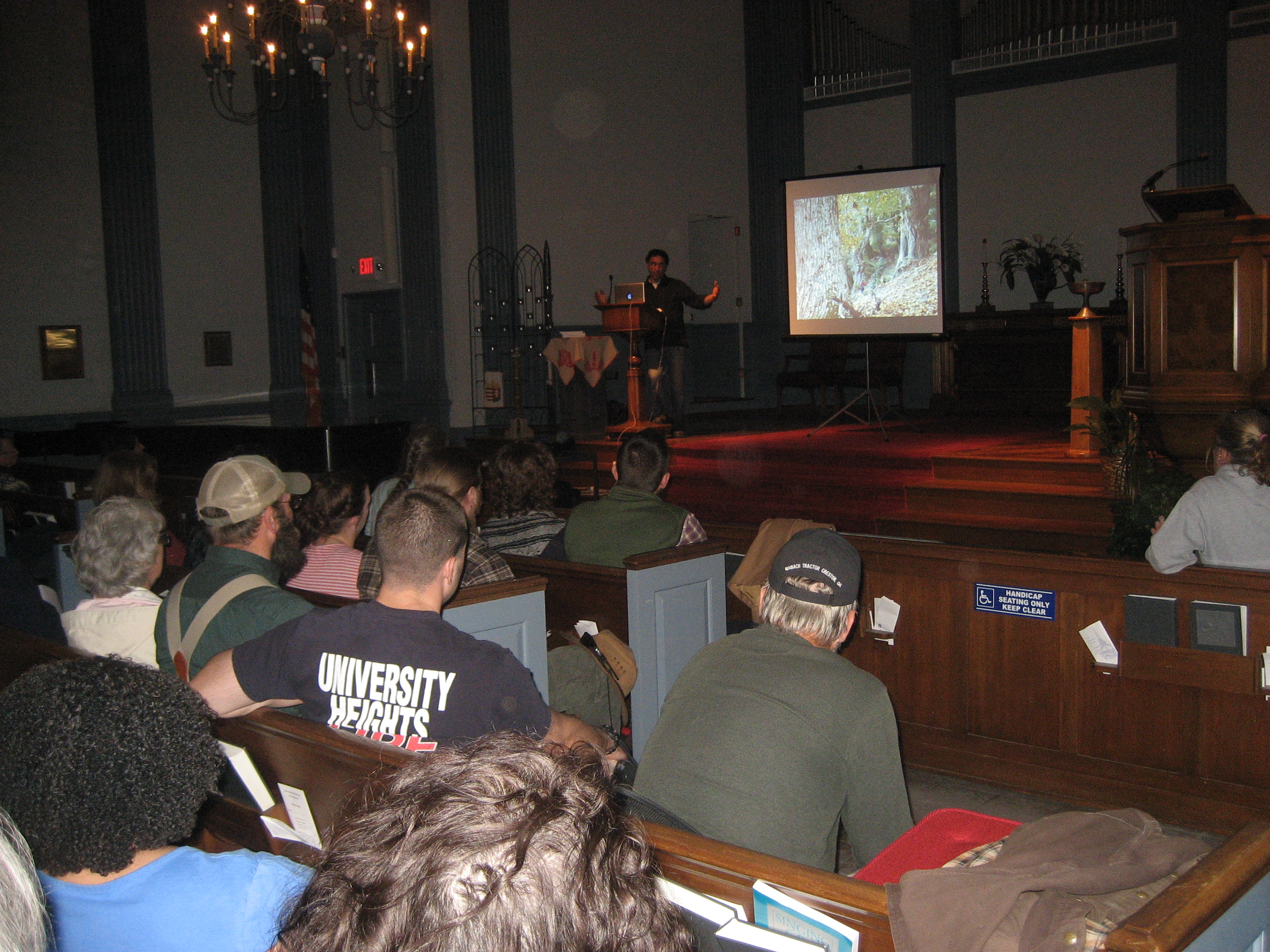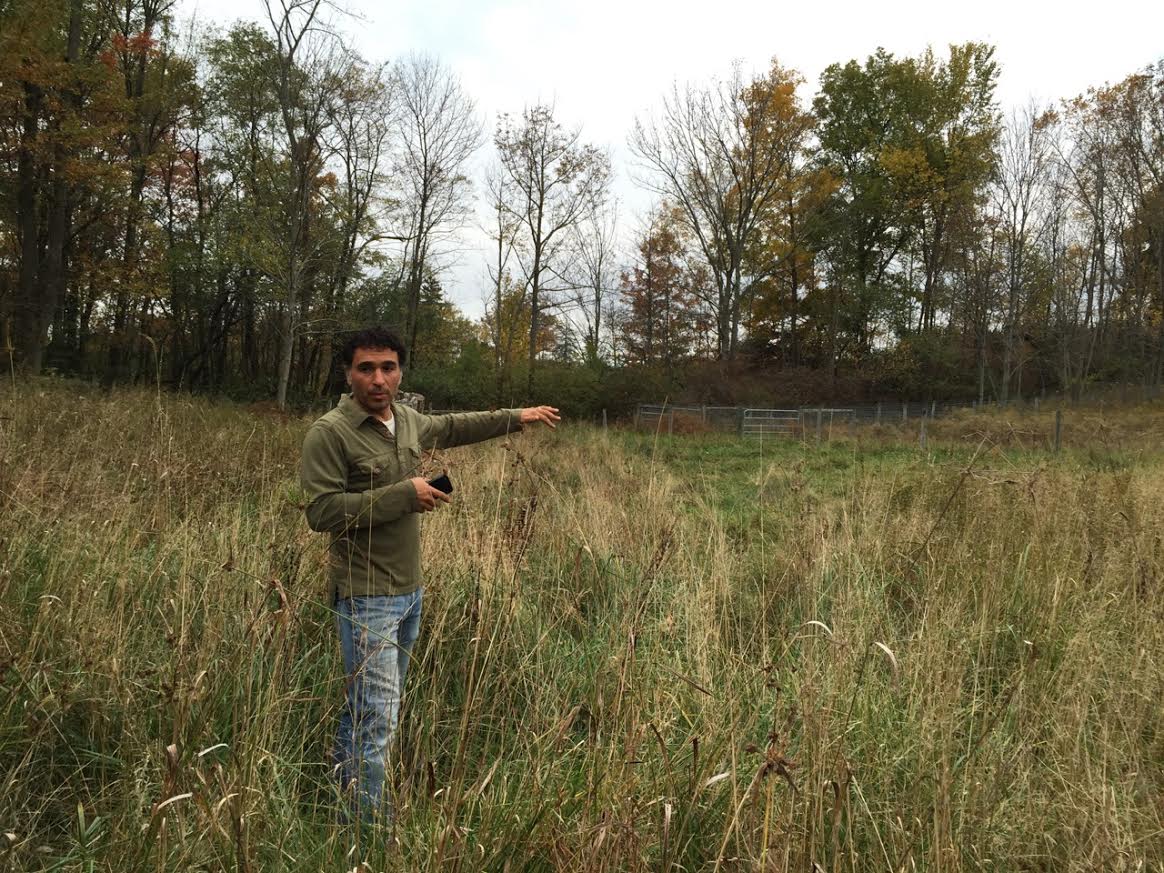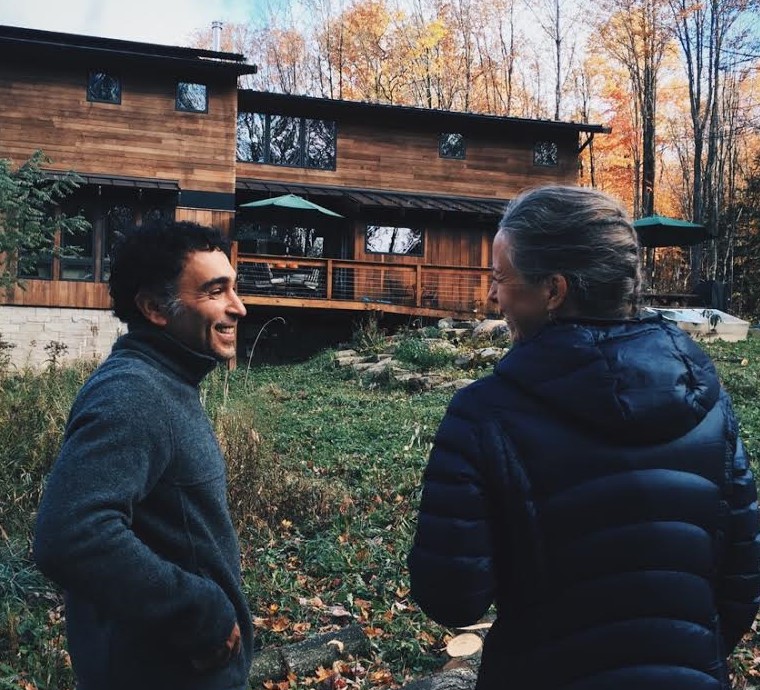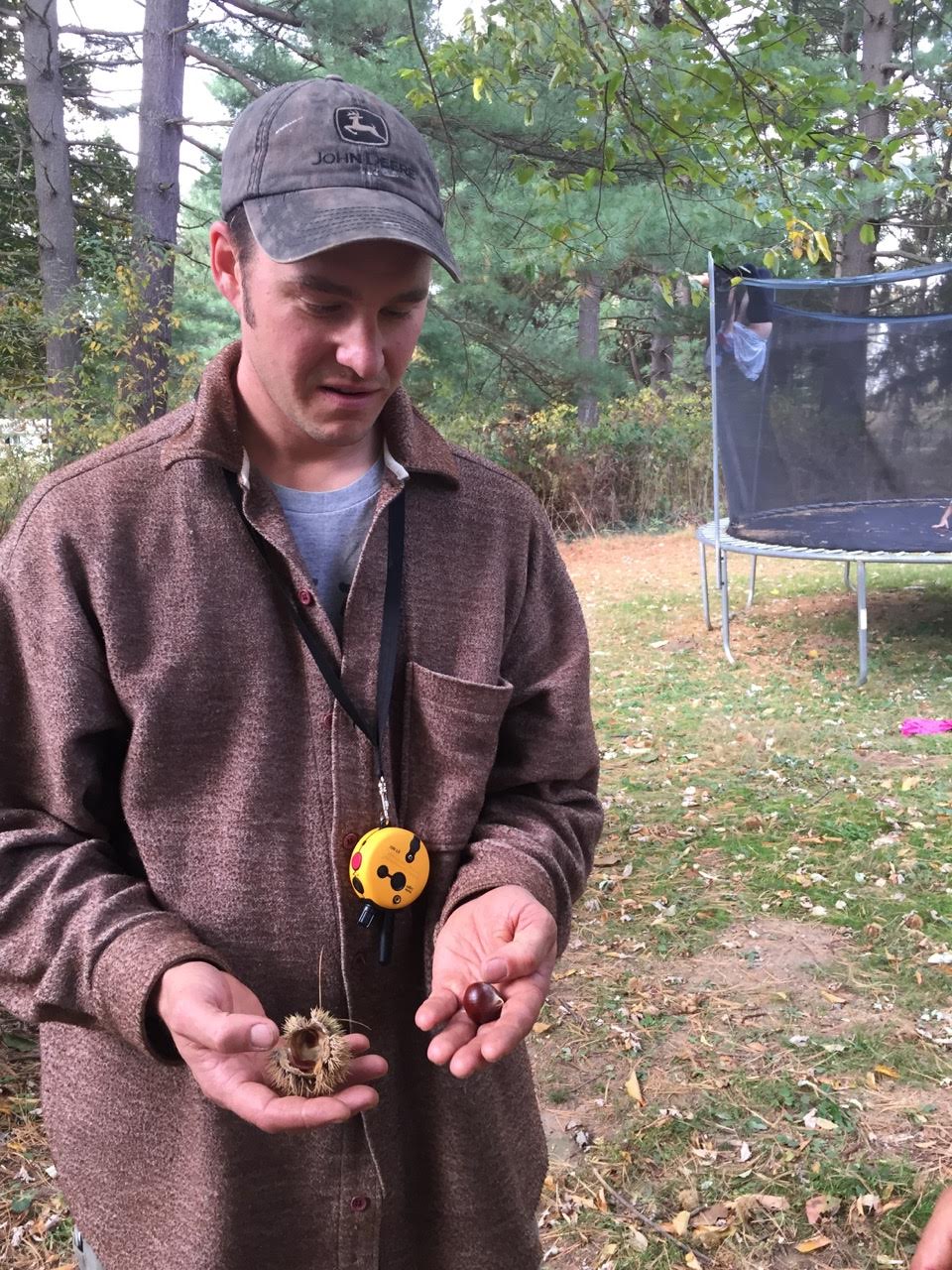by Jessie Jones
Foamy, muddy water gallops over a waterfall after a severe storm in Vermont. Ben Falk then switches the camera to a quiet trickle of clear water leaving the low point on his property, same storm. Obviously, Ben’s plantings do a vastly better job of retaining water and soil than his neighbor’s. I knew academically this could be done, but too few people have tried, succeeded and documented it well. When asked during a moderated discussion why he wrote his new award-winning book, The Resilient Farm and Homestead , that is the reason he gave. “We need more people trying things and sharing the results. There’s too much theory in Permaculture.”
Ben Falk is a young Vermont-based designer, farmer, homesteader. After I participated in a permaculture design certification course at his farm in 2013, I was eager to bring Ben to Ohio to share his expertise and vision. Earlier this fall, he completed an action-filled four day tour of northeast Ohio in October.
Ben’s tour featured two public events: University of Akron Field Station in Bath hosted a Forum for Farmers and Designers for 20 guests, and The First Unitarian Church of Cleveland in Shaker Heights hosted a public lecture, attended by over 150 guests.
The tour also included site consults with six farms: Kelly’s Working Well Farm in Chagrin Falls; Light Footsteps Farm in Chardon; Spice Acres Farm at the Countryside Conservancy in Brecksville; Thorn Valley Farm in Newbury; Hershey Montessori “Farm School” in Huntsburg Township; and Terra Firma Farm in Walton Hills.
At all six farms water management, without exception, was among the proprietors’ highest priorities. They also had questions about non-native plants and site design. Here are some of Ben’s thoughts, many of which apply to gardens as well as farms:
Water management strategies
Slow it, sink it, spread it – basic permaculture tenet
Keep it on the surface: if confined in a culvert, water will pick up speed and become a more damaging force
To slow water, build a series of check dams.
Repeated check dams built with overflows on alternating sides will cause high volumes of water to meander more slowly. Dams can be planted with woody or herbaceous perennials, creating chinampas – one of the most productive agricultural configurations in human history. Depending on scale, one can use apple trees, blueberries or herbaceous perennials (think rain garden species)
Along streambeds, ensure water has access to flood plain as much as possible. Steep and deep banks speed water flow and increase erosion.
Ponds
When choosing a pond site,
Consult a topographic map to calculate the volume of rainwater it will be catching, based on the surrounding slopes
Consider respective elevation, ideally at highest point or at least higher than the area to be irrigated.
Consider proximity to zones of use – easy access for irrigation, livestock watering, human use
Consider placement relative to livestock: not directly downhill from point source of manure. If this is unavoidable, use swales to direct water flow across slope and away from pond.
Pond volume should corresponds appropriately to amount of annual water drainage for the selected pond site
Environment surrounding pond
Edges should be planted with wetland species like rushes and cattails, which oxygenate the water. Even a shallow pond with low flow-through can have healthy, clear water with the right balance of wetland plants.
Perennial plants on pond banks should not be mown close to water edge as they provide shade and cover for amphibians as well as helping stabilize the banks. Margin can be mown in a scalloped pattern to increase “edge” and provide easier water access for small animals.
Shade is essential for a healthy pond and aquatic life.
Trees can provide shade but must not be planted on the pond berm.
Tall perennial plants are a good choice – some prairie plants grow to six or more feet.
Floating islands of plantings require some maintenance and should be removed in winter, but are attractive and can shade areas far from the shore.
Docks provide shade and protected habitat as well as human interface to pond environment.
Non-native plants
Vermont does not face the same challenges with opportunistic non-native plants, but one strategy Ben suggested is to provide competition in areas that are overgrown with unwanted, aggressive plants. Among the unwanted plants, add vigorous pioneer plants that provide desired yields such as black locust, autumn olive and Jerusalem artichoke. About which plant Ben quipped “If you can have only two tools for survival, choose Jerusalem artichokes and a .22.”
Site design
Zone 1 – This Permaculture concept describes the area you visit every day, sometimes often, such as your doorway and the walk to the car/garage or barn/animal care.
Zone one must have good sunlight, ideally south aspect
Best location for growing food, culinary herbs
High maintenance growing should be in zone one since it’s easy to weed, water, watch for disease
Scale of permanence – site plan revolves around permanent features such as buildings, roads, contours of the land.
Place them carefully if you have a choice
Roads should be sited to provide access to all parts of property
Better for roads not to bisect open areas such as pasture
Expensive fence should be saved for property perimeter. Livestock can be contained with inexpensive, moveable electronet for mob grazing
Trees are not permanent. Even big trees, if they are placed badly and/or don’t provide a yield that you value (beauty, shade, food), should be removed
In some cases a building can and should be moved or changed in significant ways
Keep your perspective flexible – mindset should not be high on the scale of permanence!
Beauty as a yield – Ben reminds clients that beauty is a legitimate yield of a system. Indeed, Ben’s cultivation of beauty is one of the things that makes the experiences of reading his book and visiting his homestead so enjoyable.
Looking at a pond is beautiful. Looking at it through a screen of fruit trees is even more beautiful.
Plant walkway edges with a wide array of herbaceous perennials. They can be knocked down for snow removal and provide food and habitat for insects and birds. Coordinate with others to buy plugs in flats at wholesale prices. Many have medicinal properties as well (e.g. monarda, calendula).
Though mundane, it is worth considering, Ben reminds us, that all projects potentially impact property values. Consider aesthetics when planning significant work.
Ben was struck by the variety and quantity of nut trees in Ohio. We were delighted to discover that one farm had a mature chestnut tree that was bearing heavily.
He especially admired the hickory trees, which are scarce in Vermont. Interestingly, deer are also scarce in Vermont, compared to our population. He recently received a grant to provide for significant fencing in support of a grazing operation on one of his farms. He suggested concerned farmers in Ohio could seek funding for deer fencing.
The most coveted role in Ben’s entourage seems to me to be that of host and chauffeur. I was honored to attend all consults and events as well as provide room and board. Ben is a wise, patient, down-to-earth guy. His tour was an unparalleled learning opportunity and inspires me to start right away planning another guest for next year!




Thanks for the report Jessie! Wish I’d heard Ben’s talk at First Church!